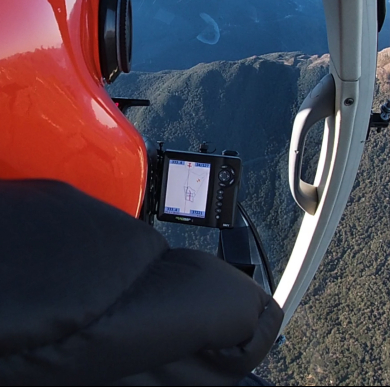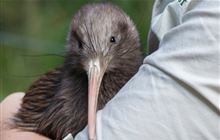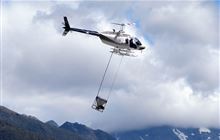How an aerial 1080 predator control operation is run
Introduction
We work to make sure operations are well-organised, safe and necessary through careful assessment, safety planning, community engagement and record keeping.Step 1: Assessing when and where to run the operation
First, the site must be prioritised for predator control as part of a long-term regional conservation plan. Engaging in partnership with iwi, hapū and whanau is part of this process. We must begin planning 2-3 years before we can consider an aerial 1080 operation. How we use 1080.
Once confirmed, the timing of a 1080 operation depends on what animals are most at risk and when they are most vulnerable.
Some of our native species are more vulnerable to introduced predators than others. The ones in most danger of extinction are those that breed slowly, are long-lived and take a long time to reach maturity. Birds that nest in cavities in trees or the ground, and/or have long nesting times, such as kiwi, kea, mōhua, and kōkako are particularly at risk from predators.
We must then decide when it is the best time to use 1080. The timing might be because of:
- Community agreement. Tangata whenua and community members can request operations to be during a time that won’t impact other activities, such as the deer hunting roar season.
- A heavy beech mast, if monitoring and seed sampling show higher predator numbers.
- Birds nesting. Most birds breed in spring and summer, at the same time young stoats leave the den, so we plan operations to protect them, their eggs and young.
- The weather. An operation requires fine, calm weather so we can drop bait pellets safely by helicopter and predators can eat the baits before the 1080 leaches out of them. Rainwater will wash most of the 1080 from uneaten baits into the soil, where it quickly loses its toxicity as it is broken down by microbes.
DOC plans 1080 drop areas by finding what will provide the best protection for the taonga species. The area needs to be where the species can thrive and be large enough that predators don’t repopulate too quickly after control. We may also use ground control in part of the area or in adjacent treatment blocks to stop reinvasion.
To recommend treatment in an area, DOC reviews:
- where the core populations of the taonga species are
- what our monitoring has shown us of predator numbers in these areas
- surrounding landscape to help identity size and shape for the treatment area.
Once recommended, we show the planned drop on our pesticide summary map as a ‘proposed application’. We also list it on the National Predator Control operations page.
Step 2: Safety planning for an aerial 1080 operation
Once we’ve assessed an area, and 1080 has been agreed as the best control approach, we seek permission from the Public Health Unit to run an operation.
Local district health boards’ public health units (PHUs – specifically a public health HSNO enforcement officer) decide whether to allow it and set the rules we need to follow.
There are many conditions DOC must agree to and prove we’ve completed, including:
- gaining consent of the landowner/occupiers within the operational area
- notifying neighbouring landowners, schools, early childhood centres, veterinary and health services about the planned operation
- putting public notices in the local papers before the operation
- identifying drinking water supplies within the area to exclude or temporarily close and to support water testing shortly after the operation.
- work with Public Health Officers from the local District Health Board to minimise any risks and protect public safety.
- apply for permission under the Hazardous Substances and New Organisms Act 1996.
Once we have the permissions, we show the status of the area in the pesticide summary map as “pesticides will be laid”.
Step 3: Informing the community
Once permission has been granted, we notify the Regional Council of the planned operation and where it will be occurring.
Then we wait for good weather. An on-call meteorologist helps decide timing. The weather can be very changeable, so the drop crew need to be ready at short notice.
When the weather is right DOC:
- reminds tangata whenua that the operation will begin shortly
- notifies the Public Health Office
- gives neighbouring landowners 24 hours notice
- erects warning signs at all known points of public access to the operational area
- changes the status on the pesticide summary to ‘pesticides have been laid’.
- DOC also places an alert on major walks that may be affected by the drop
Step 4: Running the operation
Before the 1080 operation, we help its success rate by carrying out at least one drop of non-toxic cereal baits. This is to get rats and possums used to eating them before dropping the toxic baits.
The non-toxic baits are light brown, while the toxic baits are dyed green – so it’s easy for people to tell them apart. There are no health risks from the non-toxic baits.
The 1080 drop
On the day, the team will assemble at the loading site(s) for a safety briefing before work begins.
‘Loading sites’ are the places where the trucks transporting the 1080 baits are unloaded. Here, we put the baits into special buckets. These are hung from the helicopter and set up to accurately spread pellets for the operation.
The team comprises:
- the site lead, who is in charge of the operation
- a safety officer who ensures we minimise any risks, such as checking that workers are wearing the correct protective clothing to meet WorkSafe regulations
- helicopter pilots, and a ground crew who refuel the helicopters and load bait buckets
- a bait logger who records when each helicopter returns for a new bucket load
- and a geospatial analyst monitors the operation as it’s happening then downloads the helicopter’s GPS records to review where the bait has dropped.

A pilot following a map with coordinates to apply bait
Once the helicopter pilot has completed all flight paths in the designated area, DOC staff may need to check tracks or other areas that the Public Health permission requires. They remove any individual baits they see on the tracks.
The helicopter has the coordinates of each drop programmed into its navigation system and measures are in place to ensure bait is applied only where intended. But, if an unexpected difficulty means bait may have been applied outside of the notified area, DOC’s geospatial analysts record it. Staff will then quickly recover the bait and report within 24 hrs to the:
- Environmental Protection Authority
- affected landowner (if on private land)
- Public Health Office
- Regional Council
- officer in charge of the nearest Police station.
Step 5: Recording the operation’s impact and follow-up
After the drop, we monitor the reduction in target predators and also the species that the operation aimed to protect. We carry out rat and mice monitoring about 2-6 weeks after.
DOC places possum carcasses with cages over them within the area. The cages prevent wild animals eating the carcasses so we can monitor how long to they take to break down.
Only once possums have broken down almost completely is the area considered safe for dogs. Even a small amount of 1080 inside the stomach of a dead possum can kill a dog. So we maintain warning signs until risks to dogs have passed (up to 7 or 8 months). The PHU might extend this.
When the risk has passed, we remove the warning signs and update the pesticide summary so the area no longer shows on the map. You can find records of recent 1080 drops on the National Predator Control operations page.
We also send a post-operation report to the EPA within 6 months. These are then published on EPA's website.


